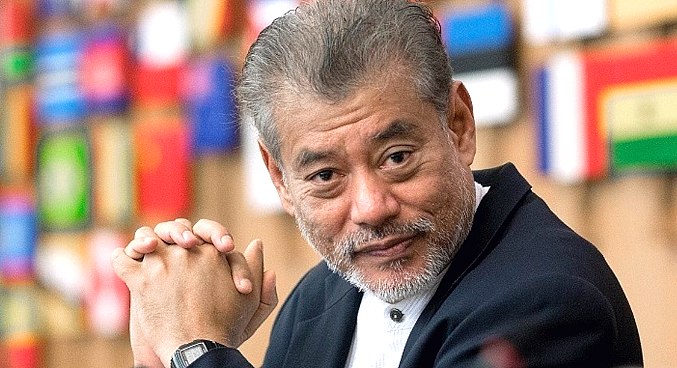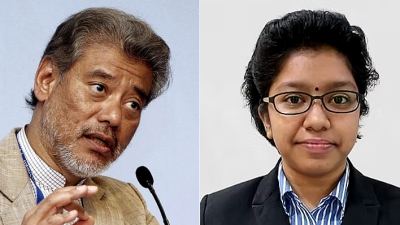
The latest publication of Khazanah Research Institute (KRI), Health and Social Protection: Continuing Universal Health Coverage, advocates better health protection as part of more comprehensive social protection.
Following KRI’s earlier report, Building Resilience: Towards Inclusive Social Protection in Malaysia, it recommends social policies to protect people over the different major stages of human life: childhood, working life and old age.
Authored by Nazihah Noor and Ilyana Syafiqa Mukhriz Mudaris, the new volume complements last year’s KRI study, Social Inequalities and Health in Malaysia, reviewing progress in Malaysians’ health, also led by Nazihah.
Pandemic wake-up call
This new report presumes the pandemic has been a wake-up call, forcing policymakers to address the nation’s growing but still largely ignored health problems. The COVID-19 pandemic has undoubtedly exposed inadequacies in Malaysia’s public healthcare spending, provisioning and priorities.
The new study focuses on the costs and financing of health protection. Although preventable non-communicable diseases (NCDs) are still rising, accounting for 74% of health issues (that is, illness, disability and death) in Malaysia in 2019, only 7% of total health spending went to preventive health and health promotion.
Such vulnerabilities underscore the need for much needed health system reforms to improve Malaysians’ well-being. They recommend more preventive health investments, integrating health dimensions with other public policies, and a comprehensive electronic health records (EHR) system.
The authors recommend using EHR to enable personal continuity of care, promote preventive health and develop a comprehensive database on Malaysians’ health. In September, the government announced its intention to establish an EHR system in the 12th Malaysia Plan, 2021-2025.
Financing better healthcare
The KRI report calls for more funding of public healthcare from government revenue. Government provisioning has long ensured most Malaysians can secure the healthcare they need without risking financial catastrophe. Thus, Malaysian public healthcare had long been under stress, well before the pandemic.
In 2019, 70% of total hospital admissions were in government facilities compared with 30% in private ones. Similarly, 87% of total outpatient visits were to government facilities compared with 13% to private ones. But even most of those who use private healthcare for most medical requirements fall back on the public sector for catastrophic needs.
With adequate financing, Malaysia can strengthen the public healthcare system’s ability to protect its population. Partly due to greater longevity, healthcare costs have been rising, largely driven by higher medical charges due to greater privatization and pharmaceutical patent royalties.
Anybody can experience unexpected health threats such as illness and disability or face death. These worsen economic vulnerability — both at the national level as well as for families — due to unnecessarily high and rising medical expenses, costly family coping strategies and related income insecurity.
In 2019, “premature” death and disability deprived the Malaysian population of 32.5 million of 7.7 million years of healthy life! Thus, Malaysians lose an average of 2.8 months yearly — or almost a quarter of their lives — to ill health, with almost three-quarters of such losses due to preventable NCDs.
Spending versus outcomes
Malaysian healthcare provision has been able to deliver significant health protection for the population, primarily through public system delivery, financed by government revenue. Such subsidized public healthcare has provided near universal health coverage for the population.
Malaysia has seen continuously rising healthcare spending. Although the public sector has more hospital beds, doctors and nurses, it has to serve many more patients compared with the private sector. Yet, despite serving many more, the public sector accounted for just over half of total health spending in 2019.
Although total health spending has been rising, it remains relatively low in relation to economic output and growth. In 2019, such spending came to only 4.3% of gross domestic product (GDP), with about 45% spent by the health ministry. Out of pocket health spending came to 1.5% of GDP in 2019.
Chronic underinvestment — arguably over the last four decades — has undermined overall public healthcare. Importantly, Malaysia’s underfunded health system has nonetheless improved some key health outcomes — for example, by reducing child and maternal mortality, thus raising life expectancy.
Such relatively low spending and decent outcomes imply relatively high efficiency of health expenditure, or cost-effectiveness, to use economic jargon. But for a nation long on the cusp of becoming a high-income country, much more could have been achieved with better policies and spending.
International data comparisons confirm no simple direct relationship between health spending and well-being at the national level. In other words, more health spending does not mean correspondingly better health outcomes.
Policy recommendations
To enhance health and well-being in Malaysia, healthcare system resilience must better protect Malaysians from current and future challenges. In this connection, the KRI paper makes several key policy recommendations.
It rejects oft repeated but misleadingly false claims that current government healthcare spending is too high. Greater, but also more appropriate, public healthcare financing is crucial. Tax revenue should be the dominant form of health financing in ensuring universal health coverage.
The report reiterates former World Bank economist Adam Wagstaff’s advocacy of revenue-financed health provisioning due to the high costs of profitably managing health insurance systems, both private and “social”. These typically involve unnecessary insurance management expenses compared to public healthcare systems.
To better address social determinants of health, the report urges more comprehensive policies. An integrated all-of-government approach would assimilate health into all public policies. The authors also urge affordable, healthier food options, physical exercise and an environment conducive to healthier lifestyles for all.
The KRI paper laments insufficient investment in preventive health compared to curative services. By mainly focusing on curative interventions, Malaysian public health policy and spending have not paid sufficient attention to the socioeconomic determinants of health and well-being as well as health inequities.
The authors also identify priorities for health promotion, including more preventive efforts. They also emphasize the importance of recruiting and retaining needed healthcare professionals apart from recognizing the country’s changing needs and adapting appropriately.
Beware easy reforms
Most British people remain proud of their National Health Service (NHS) despite steady defunding over the last four decades. Likewise, most Malaysians appreciate our public healthcare despite its undeniable problems. Like the NHS, public healthcare in Malaysia remains threatened by government neglect and private greed.
Healthcare cannot be left to greedy profit-seeking private interests. Malaysia laid the foundations of a strong public system in the 1960s and 1970s, but has since been distracted from further improving it by false private promises of “win-win solutions”.
After the failures of earlier reforms became self-evident, promoting private or even social health insurance is driving healthcare costs up at the expense of healthcare personnel and patients, as international experience has made clear.
This article was originally published on The Edge Malaysia.
(Jomo Kwame Sundaram, a former economics professor, was UN assistant secretary-general for economic development. He is the recipient of the Wassily Leontief Prize for Advancing the Frontiers of Economic Thought.)
ADVERTISEMENT
ADVERTISEMENT






































